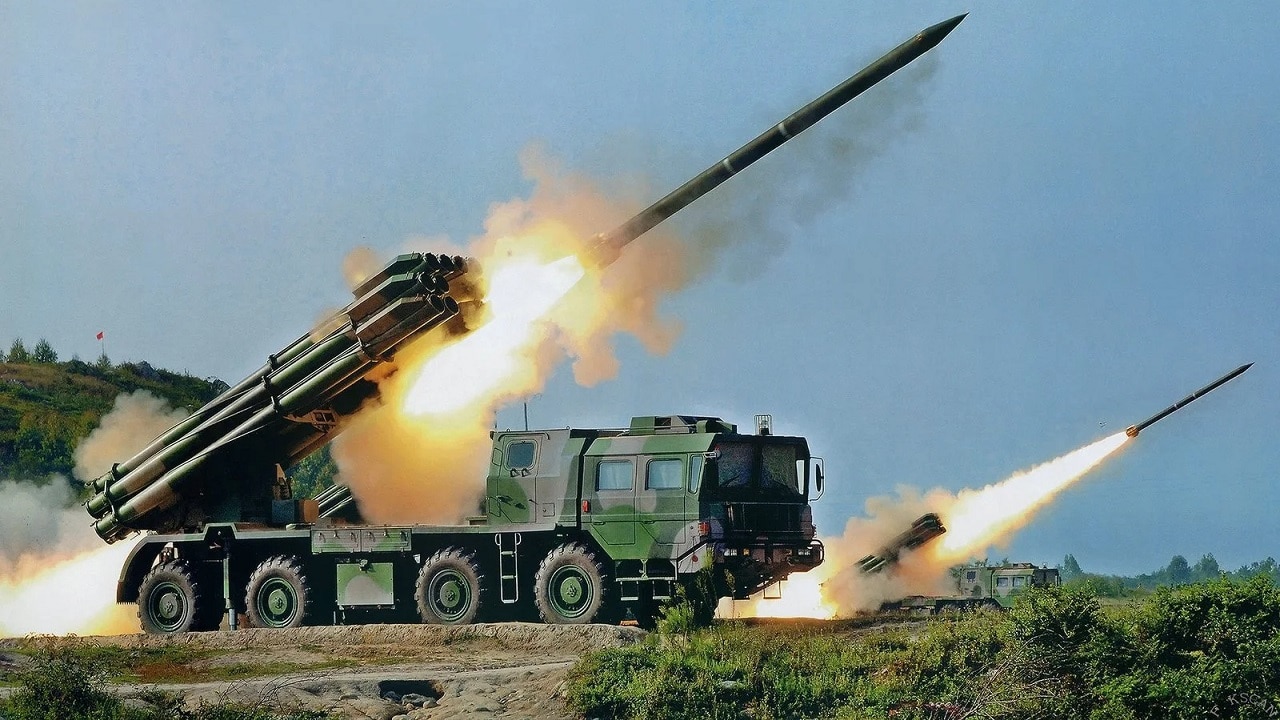Russian Smerch Rockets Are Intimidating Civilians with Cluster Munitions – The BM-30 Smerch (Tornado) multiple-launch rocket system is believed to be the Russian weapon that is firing rockets with cluster-bomb warheads at Ukrainian civilians in cities.
This practice has humanitarian organizations crying foul. The rocket’s warhead opens in the air and releases dozens of deadly bomblets and submunitions that scatter around targets causing massive casualties. Sometimes the bomblets do not explode and create ordnance that is dangerous to civilians who are on the move to evacuate. Others are trapped in basements and bomb shelters in subways quivering in fear of the cluster munitions.
Cluster Munitions Are Hitting Urban Targets
Michelle Bachelet, the United Nation’s human rights chief, spoke at the Human Rights Council in Geneva at the beginning of the war. She said that “most civilian casualties were caused by the use of heavy artillery, multi-launch rocket systems, and airstrikes in populated areas, with concerning reports of the use of cluster munitions striking civilian targets.”
Ongoing Investigations Into War Crimes
In 2008, 108 states signed a United Nations treaty that banned the use of cluster munitions. The United Nations and other rights groups are using pictures, videos, and witnesses in their investigation into the use of cluster bombs in Ukraine’s second-largest city of Kharkiv. There are numerous photos of unexploded submunitions that would be used for evidence by the International Criminal Court’s current investigation into Russian war crimes and crimes against humanity. The unexploded bombs are especially dangerous to children who do not know they can cause a blast when touched.
Human Rights Watch investigators have cited that Moskovskyi, Shevchenkivskyi, and Industrialnyi districts in Kharkiv have been terrorized by cluster bomb attacks.
Cluster Munitions – What Is Firing These Awful Weapons?
The BM-30 Smerch multiple-launch rocket system is the likely culprit. The Smerch has been in service since 1987 and at the time was one of the most lethal rocket systems in the world. The Soviets designed it for maximum fire power. It launches large-diameter 300mm rockets that can be re-loaded in 36-minutes. The rockets fly with a solid-propellant rocket motor.
Neighborhoods Are In Danger
The Russians now operate about 100 of the systems. They were used by the Russians in Chechnya and Syria – both conflicts where cities and civilians were targeted. The Smerch system can also fire anti-armor cluster munitions. These would be extremely deadly when targeted at neighborhoods in Ukraine.
The Smirch launcher has 12-tubes, and the rockets have a range of 12 to 44 miles. Smerch rockets with cluster munitions were originally intended for destroying enemy runways. The bomblets could create many holes in the pavement to render a runway inoperable. The Russians discovered during the two Chechnyan wars that these rocket-fired bomblets could pulverize buildings and kill and maim the civilians inside.
Ukrainian Army Must Fire Back
A three-soldier crew mans the Smerch’s MAZ-543 8×8 truck chassis. One of the weaknesses that could be exploited by Ukrainian military’s counter-battery fire is that the truck is not armored, and this could endanger the crew. A rocket or artillery hit, even one that is not direct, could render the Smerch combat systems ineffective.
No Relief in Sight from Cluster Munitions
The Russians, knowing the effectiveness of the Smerch rockets, are not likely to stop firing the weapons. The Ukrainians can only hope for a cease fire with a humanitarian corridor that will allow non-combatants to escape to bordering countries.
The war crime investigators are brave. They have to enter dangerous neighborhoods to find witnesses and interview them. They have to avoid unexploded ordnance and are jeopardized by more cluster bombs launched by the Russians that rain in from outside of the cities. The Russian siege mentality is likely to drive more uses of the Smerch as cities become routinely encircled and bombardments against civilians increase.
Now serving as 1945’s Defense and National Security Editor, Brent M. Eastwood, PhD, is the author of Humans, Machines, and Data: Future Trends in Warfare. He is an Emerging Threats expert and former U.S. Army Infantry officer. You can follow him on Twitter @BMEastwood.

